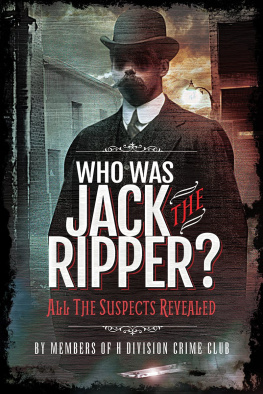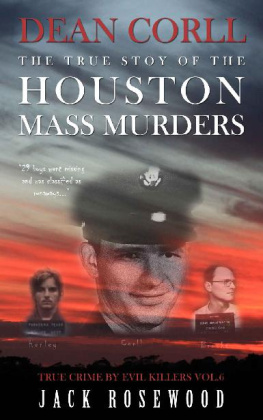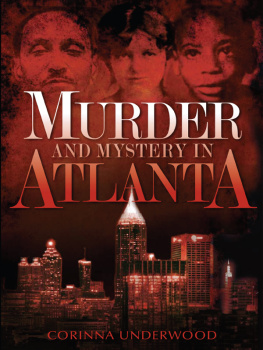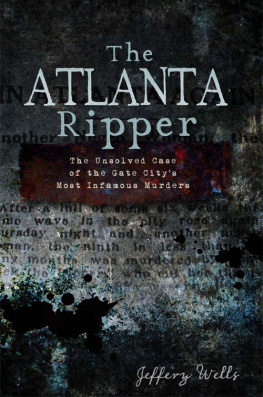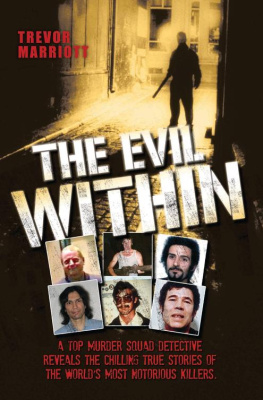
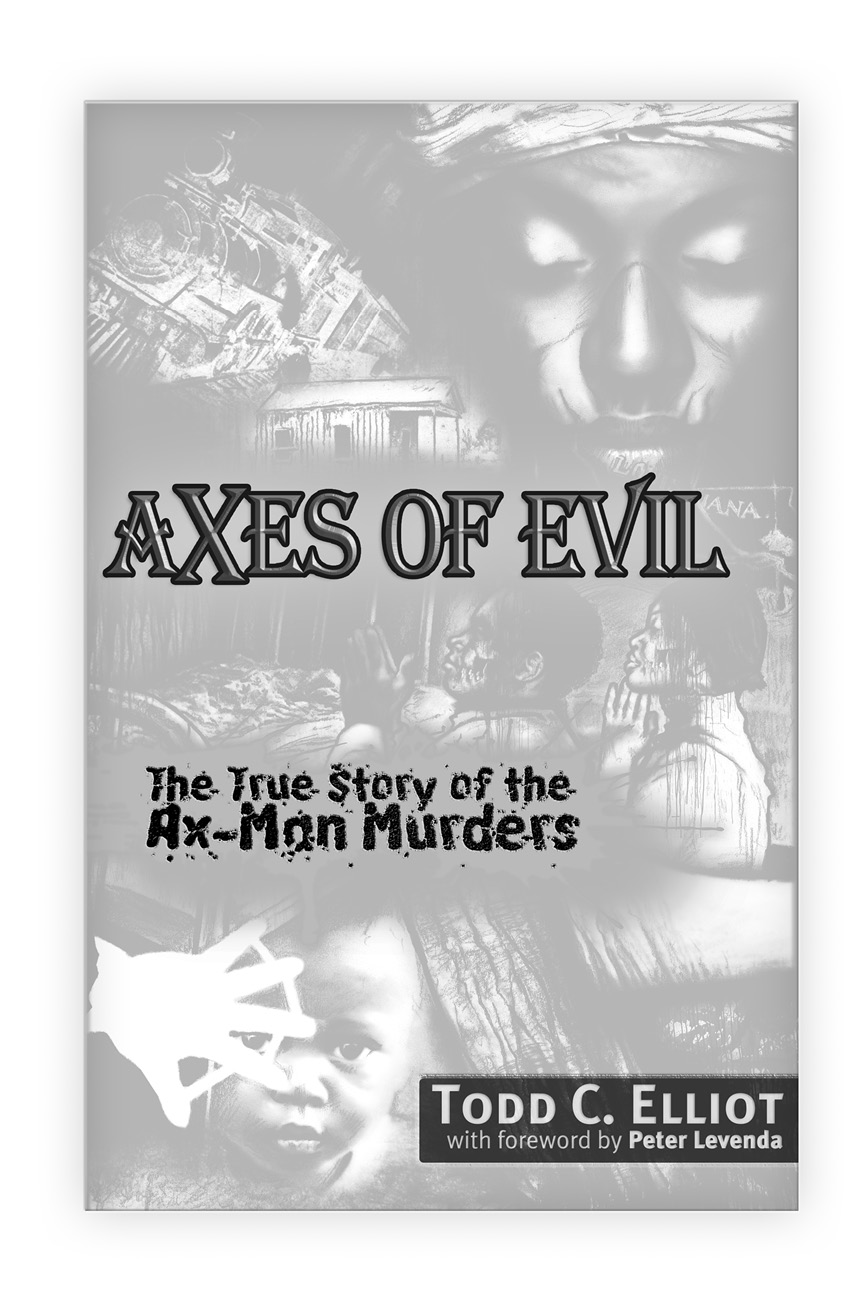
Table of Contents
Axes of Evil: The True Story of the Ax-Man Murders
Copyright 2015 Todd C. Elliott. All Rights Reserved
Original illustrations Copyright 2015 Hal Moore
Published by:
Trine Day LLC
PO Box 577
Walterville, OR 97489
1-800-556-2012
www.TrineDay.com
publisher@TrineDay.net
Library of Congress Control Number: 2014958812
Elliott, Todd C.
Axes of Evil: The True Story of the Ax-Man Murders 1st ed.
p. cm.
with original illustrations by Hal Moore.
Epud (ISBN-13) 978-1-937584-73-3
Mobi (ISBN-13) 978-1-937584-32-0
Print (ISBN-13) 978-1-937584-72-6
1. Serial murders -- Louisiana -- Texas. 2. Murder -- Illinois -- History -- 19th century. 3. Families -- Crimes against -- United States -- History I. Elliot, Todd C. II. Title
First Edition
10 9 8 7 6 5 4 3 2 1
Printed in the USA
Distribution to the Trade by:
Independent Publishers Group (IPG)
814 North Franklin Street
Chicago, Illinois 60610
312.337.0747
www.ipgbook.com
From goulies and ghosties and long-leggedy beasties
And things that go bump in the night
Good Lord, deliver us!
This work is dedicated to Robert C. Benoit, a man Ive never had the pleasure of meeting. With his work and research, he inspired me to complete my own.
This work is also dedicated to the memory and remaining members of the 10 sleeping families of Louisiana and Texas.
Foreword
America is a Treasure House of Sick Images and Hungry Ghosts
T here is ample evidence of cultures and civilizations that flourished in North America at the same time that the pyramids were being built in Egypt, or Stonehenge was erected in ancient England. Americans tend not to think of their country this way, as something eldritch and antique. We focus on our recent history, the revolution against Britain, Manifest Destiny and Westward, Ho! Like the housing development in the film Poltergeist , our country is built on a vast burial mound and every time we dig a ditch or drill a well or plant a flag on this dark and bloody ground we raise spectres, ghosts, and banshees. We wander oblivious through sites sacred to nameless gods; we picnic on graves. We build prisons over magic circles.
And we establish towns over ley lines that connect slaughterhouses and sacrificial altars.
Todd C. Elliott is fascinated with this aspect of American culture. Starting with a found reference to the Ax Man Murders in pre-World War One Louisiana he finds evidence of a cult of killers calling themselves the Human 5. Entire families are brutally slain in towns all over the South. Suspects are arrested, thrown in prison and the killings continue. Ritual and race figure prominently in newspaper accounts and the popular imagination. Then word of another sect bubbles up through the swamps, that of a Sanctified Sect whose members, once initiated, can do no wrong and can be judged guilty of no sin. The murders continue.
There are strange preachers in this tale, elements of voodoo and ritual magic, hideous crimes in the name of either God, Satan or Eugenics or all three. Im not making this up, and neither is Todd Elliott.
The trail extends out from the Deep South and to other parts of the country. Murders eerily similar to those that took place in Louisiana and Texas crop up in Iowa and Colorado. There seemed to have been a network of crazed ax murderers at work, and there was always this insistent connection to religion, and to race.
The range of this story is rich and complex with many twists and turns and should provide inspiration for a television series or a feature film. Think True Detective . Think The Killing .
America (I always say) is a haunted house, and we insist on increasing our countrys store of restless ghosts and demented spirits without putting to rest the others. This book shows us how the police and the justice system of 1912 Louisiana and Texas were not up to the task of addressing the unthinkable: vicious homicides of entire families wrapped up in ritualism and race. This was before DNA evidence, before scientific forensics as we have come to understand it, before criminal profiling. Gruesome crime scenes and crazed suspects are always a challenge to any police force; but in the South of 1912 it was a replay of Salem in 1692, or a foretaste of Los Angeles in 1969.
Mr. Elliotts prose takes us right along on this wild ride into Americas subconscious. He focuses on the facts of the case without editorializing. He realizes that the subject matter speaks for itself, that there is no need to gild the lily. Even more, he provides connections to other crimes that took place outside of the South and suggests there might have been a network of killers perhaps murderers-for-hire, perhaps religiously-motivated, or both that escaped the attention of early twentieth century police departments in the days before the Internet, before CODIS, before the BAU.
This is a thoroughly satisfying read and one that should provoke discussion on many levels. It is a forgotten episode of American crime but one that was screaming out for the attention that Todd C. Elliott was able to give it. Perhaps these particular ghosts can be laid to rest now.
But I doubt it.
Peter Levenda, Winter 2014

Introduction
Blood Atonement
1911-1912
The crime is perhaps the most horrible that has ever been committed in Lake Charles
Lake Charles Daily-American Press, Jan. 22, 1912
I first became entranced with the Ax-Man Murders of Louisiana and Texas, when the crimes were less than a hundred years old. Thanks to a friend of mine who let me borrow a book, my mind had been reeling for years until finally arriving at these present pages. The crimes, now more than hundred years old, are still mystifying, and still unsolved.
The story of the original Ax-Man murders began to circulate through the United States in 1912, capturing the imagination of the people of Louisiana and readers of newspapers across the country. I maintain that the Ax-Man murders were big news and were widely read and followed until the sinking of the R.M.S. Titanic in April of 1912.
Back in late 1998 I was fixated on true crime stories and horror novels. The Ax-Man story satisfied both my appetites as the tale was both true crime and true horror. I relished the monsters of the 20th century, those serial killers that entered the mainstream and the subconscious mind of the American populous. The American dream, it seemed, was fast becoming an American nightmare with every new book that I read, peering into that desolation row of killers.
My friend, Jeremy, of Lake Charles, lent me a copy of Raising Hell: An Encyclopedia of Devil Worship and Satanic Crime by Michael Newton (1993). I started with the As. And there it was: Ax stood for the Ax-Man murders. The first thing that caught my eye about the Ax-Man passage in the book was that it referenced my hometown of Lake Charles, Louisiana.
The book described the grisly murder of the Felix Broussard family in Lake Charles in 1912. As I read on, I learned that more ax murders had occurred in other Louisiana small towns I was very familiar with: Lafayette, Crowley and Rayne.




